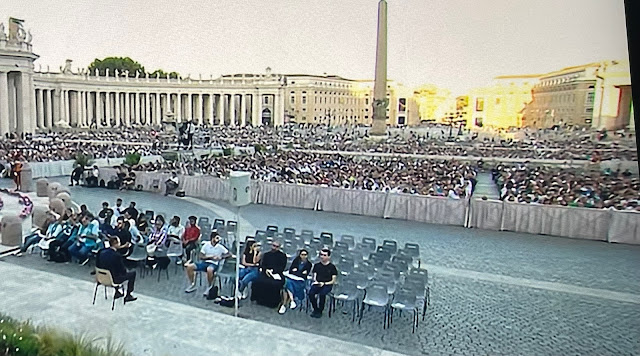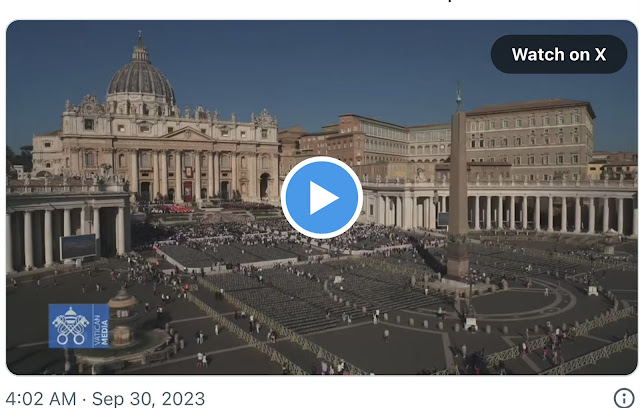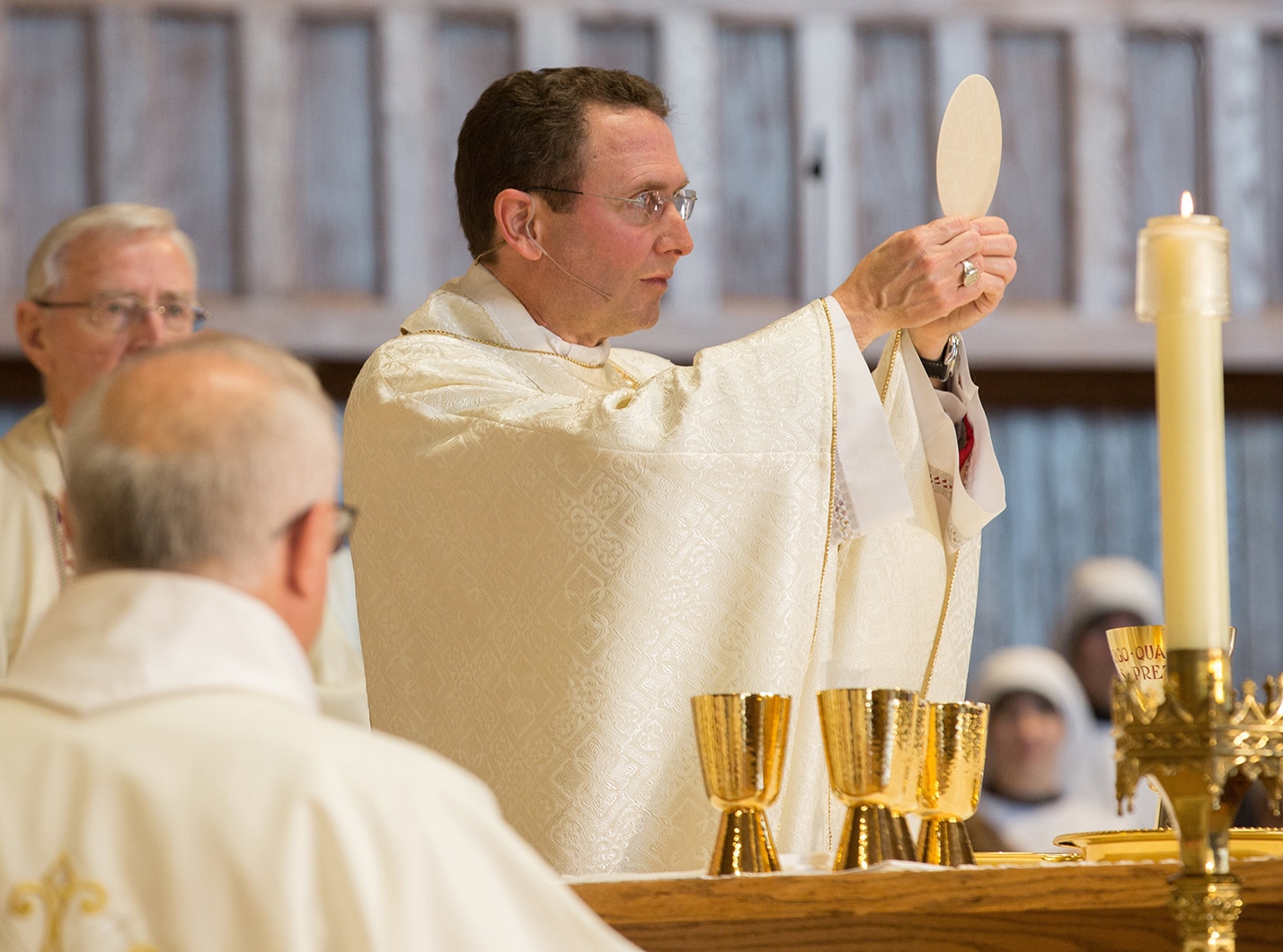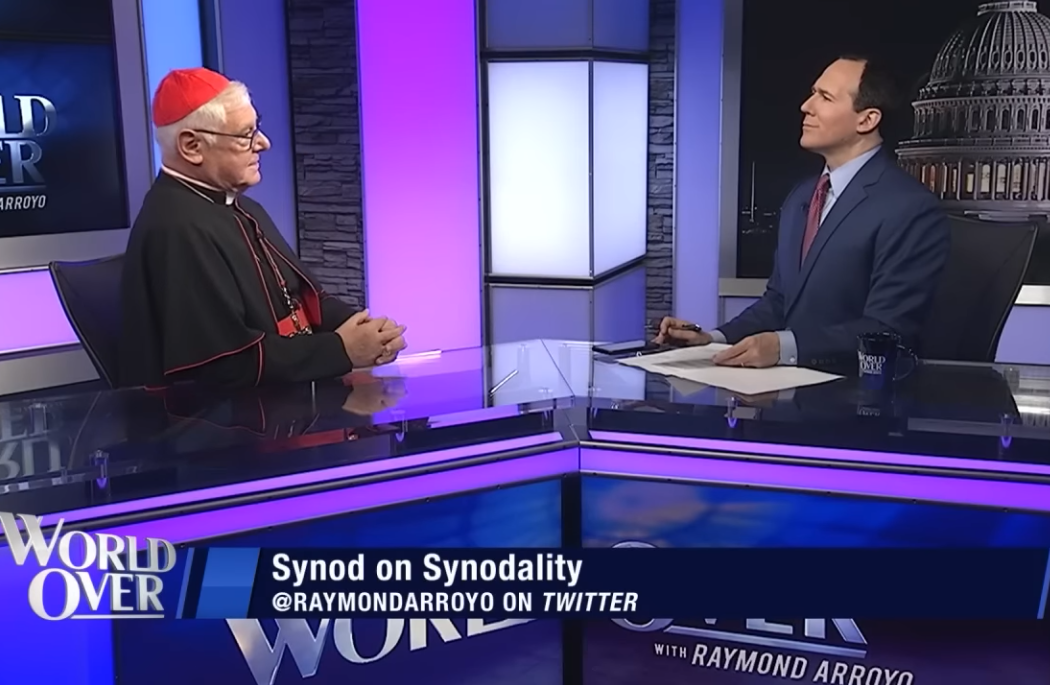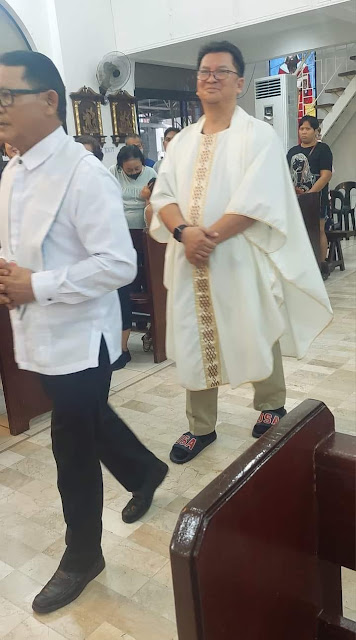The Mass, since Vatican II, as we all know and have experienced, is more clerical than it ever was prior to the Council. Bishops and priests make up their own rubrics or dismiss the rubrics present in the modern Mass in a minimalist way--that's clericalism especially if the words of the Mass are changed to suit the priest or bishop.
Part of the clericalism is placed on steroids given the legitimate options in the Mass which include variations on the penitential act and which one is chosen and who chooses. The same with the Eucharistic Prayer, the Mystery of Faith acclamation. One can chant the propers, aka, introit and other antiphons, but other options allow something similar or completely different.
But the one thing that trumps all other problems with the Modern Mass boils down to taste! A variety of styles of music and instrumentation, which are all over the place, in terms of options, makes the chanting of the Mass based upon taste, not tradition. And whose taste? We all know what kind of music we all like. To demand that my likes be included and my dislikes be removed is the height of clericalism. But that's the modern Mass.
What is sung and how it is sung in the Mass has caused me more stress as a priest than any other liturgical issue.
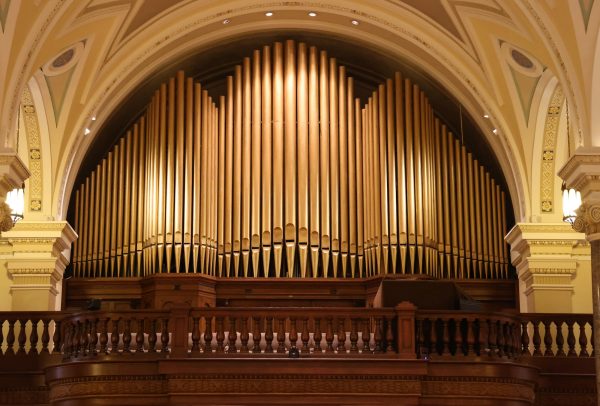
Bishop Kemme’s pastoral letter focuses on making the liturgy a transcendent experience. (Advance photo)
Dear Priests, Pastoral Musicians, and Lay Faithful,
A few years ago, I came across a promotional video for a program for liturgical music called “Source and Summit.” The video outlined how restoring the sacred nature of music in the liturgy significantly impacted the Sunday worship of a parish, which, in time, brought the parish from the brink of closure to a great renewal of parish vitality and growth. Seeing this video reignited in me a desire that I have had throughout my priesthood, serving for many years as a pastor and now as a bishop, to restore sacred music in the liturgy. (Excellent!)
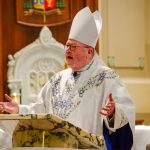
Bishop Carl A. Kemme
When done well, I am convinced that music in the liturgy facilitates a transcendent experience, lifts our hearts and minds to God, and helps to bring about a fully conscious and actual participation in the Holy Sacrifice of the Mass. Because of this, I have asked the Office of Worship to implement certain principles for Sacred Music as a model for what I would like to see at the liturgy throughout our diocese. I hope our episcopal liturgies will inspire priests and musicians to take a serious look at the Sacred Music in their parishes and help align it with the vision for music in the Church. In the following words, I would like to share my vision for Sacred Music in the Diocese of Wichita. This vision is less my own; I consider it to be the Church’s vision for sacred music.
“On Sacred Music: Let us Sing with the Lord.”
I have entitled this pastoral letter “On Sacred Music: Let us Sing with the Lord.” I believe this title expresses a profound reality about the liturgy. The Mass is the action of the whole body of Christ. In the liturgy, we, and the entire Mystical Body, participate with Christ the head in offering the one perfect sacrifice to the Father. This reminds us that the liturgy is an act of worship to the Father, through the Son, in the unity of the Holy Spirit. In the Liturgy, Christ offers God the Father the perfect sacrifice. By baptism, we are incorporated into the Mystical Body of Christ and can partake in this offering.
Christ left us the memorial of his sacrifice so that we might learn what it means to offer ourselves as a complete and total self-gift to the Father. By participating in Christ’s sacrifice to the Father, we also learn to give our lives as a living sacrifice. When the entirety of the liturgy is prayed, ad Deum, which in Latin means toward God, the liturgy sends us back into the world to live life as self-gift ad Deum. (Thank God the good bishop encourages ad orientem and the simple cogent reason why!) Indeed, many aspects of the liturgy portray the idea of self-gift; however, I want to emphasize how it is revealed in sacred music.
As we begin the liturgy, the priest and assisting ministers process toward the sanctuary. This represents our ascent to the Heavenly Jerusalem, where we pass from this world to the world to come. In the liturgy, we transcend space and time to participate in the sacrifice of Christ at the one altar that remains in the temple of the Heavenly Kingdom. From the onset, the music accompanying this procession should direct our thoughts to the particular mystery being celebrated, and it should resemble the song of the angels and the saints revealed to us in the scriptures. However, too often, we sing music that focuses not on God but on us. When this happens, the liturgy loses its focus on God and can become self-serving rather than self-giving. (Amen! Bishop Kemme! You get it!)
The church invites us to sing
Rather than entering into a discussion about which hymns may or may not be appropriate for use in the Mass—a subjective judgment that too often relies on personal taste and preference (personal taste and preference is clericalism pure and simple!)—my humble guidance is to turn our attention toward the texts of the Mass, which the Church herself invites us to sing. For example, just as the Church proposes texts for us to sing for the Responsorial Psalm and Alleluia, we also have proper texts intended to be sung at the Entrance, Offertory, and Communion processions.
These scripture verses, commonly called the Entrance, Offertory, and Communion Antiphons, are chosen by the Church to help reveal the particular mystery being celebrated. Therefore, rather than agonize over which hymn to choose, it seems fitting and preferable to use the texts provided by the Church as they are found in the Roman Missal and the Roman Gradual. (Wow, I am out of breath! Bishop Kemme gets it. So often choices are made with these chants which enables the congregation to sing along. But these are Sacred Scripture, for the most part, and like the liturgy of the Word, we don't pick and choose Scriptures so the entire congregation can say it along with the reader or understand the reading! We are given the Scriptures which must be implemented!)
Throughout the tradition of the Church, most of these proper texts provided have been set to different Gregorian melodies, and even at times, the texts have been set in pieces of polyphony. A distinguishing characteristic of these texts is that the word always comes first and is more essential than the musical composition. This is important because the sung word in the liturgy is the Word that became flesh. (Just wow!!! He gets it!)
At first, singing the antiphons may seem like a significant shift; however, it is a form of singing that we are already familiar with since singing the antiphons with their Psalm verses resembles the singing of the Responsorial Psalm. The antiphons, with their Psalm verses, are a part of Christ’s prayer to the Father, and when we sing them in the liturgy, we unite our voice to the voice of Christ. (Indeed! these are never omitted, sung or spoken, in the Traditional Latin Mass!)
Sing the Mass
What I desire most for sacred music in the liturgy is to shift our mindset from singing AT Mass to singing THE Mass. (I'm beginning to think Bishop Kemme has been reading my most humble blog. I have written this over and over and over again!) This may seem like a minute distinction, but I believe it is crucial. Utilizing the texts Christ has given us through the Church, we can restore the sacred and transcendent nature of the liturgy, emphasizing three important principles: the sanctity of sacred music, the intrinsic beauty of sacred music, and the universality of sacred music.
Sacrosanctum Concilium, a document of the Second Vatican Council, calls for a reform of the liturgy. Paragraph 112 reminds us how to evaluate the sanctity of sacred music when it states, “Sacred music is to be considered the more holy in proportion as it is more closely connected with the liturgical action, whether it adds delight to prayer, fosters unity of minds, or confers greater solemnity upon the sacred rites.”
A transformation
This way of understanding sacred music in our churches could truly transform how we approach liturgical music in the Mass. I believe that giving our attention to choosing music that is closely connected with the liturgical action will help us foster an encounter with the Divine. (Who chooses? What is it they choose, what is not allowed, if anything today, is part of the problem.)
When sacred music is closely associated with the liturgical action, it facilitates a more profound encounter with beauty, which is the second characteristic or principle of sacred music. In an audience with International Choirs, Pope Francis said, “Liturgical and sacred music can be a powerful instrument of evangelization because it gives people a glimpse of the beauty of heaven.” Earlier, I mentioned that in the liturgy, we ascend to the altar in the heavenly Kingdom.
A heavenly reality
In other words, we can say, through signs and symbols, the liturgy presents the beauty of the heavenly reality. There can certainly be a temptation to try to sanctify popular or secular music, even secular Christian music, by admitting it to the liturgy. However, we should avoid this temptation because the liturgy is meant to be something totally other so that when the priest dismisses us from the liturgy, we can go eagerly back into the world to transform and consecrate the world to God in our daily lives. (Wow, just wow, a bishop writing this as though he is an authority on the liturgy! Of course he is, but a bishop's authority comes from knowing the liturgy and Bishop Kemme does!)
To exhibit the uniqueness and beauty of sacred music, we should hold fast to our tradition and give pride of place to the Church’s preferred musical instruments, which are the human voice and the organ, and to musical repertories of Gregorian chant and sacred polyphony. When liturgical music holds fast to these elements of our tradition, it expresses heaven’s true beauty because these particular traditions are primarily reserved for the liturgy. When an environment of beauty is cultivated, we encounter something other than ourselves, someone other than ourselves: we encounter God. (Wow! What more needs to be written! God bless Bishop Kemme!)
Music is universal
Lastly, we should consider the universality of sacred music. By this, I mean music should not be based on personal preference or overly dependent on cultural expression. We should avoid the ever-present temptation to sing what is popular or expedient. Still, considering the other fundamental principles of sanctity and beauty, we should strive to employ music that transcends personal preference and leaves all who have attended with a sense of encountering something marvelous, regardless of cultural experience or other subjective factors. In summary, when liturgical music is sacred, beautiful, and universal, I am convinced that we can truly sing with the Lord during the celebration of the Mass, which offers us a powerful and life-changing experience. (Every bishop in the world should read this document!)
Some may question why it is necessary to outline a vision for Sacred Music in the Diocese of Wichita. Some may consider other issues to be of greater importance. However, I believe that promoting and restoring sacred music aligns with two important priorities in our pastoral plan. The third priority of our diocesan pastoral plan is the “renewal of parish and family life by reclaiming Sunday as the Lord’s Day.”
The Mass must be given the highest priority to achieve this goal. The worship of God each week on Sunday is, without a doubt, the most important thing we do as individuals, families, and parishes. Since it is the most important thing we do each week, we should treat it as such. The liturgy should be carefully prepared and thought out. (Sunday Mass is where we reach the majority, the vast majority, of our Catholic parishioners and others who attend. Yes, Bishop Kemme, you are right--Sunday Mass is Sacred and the most important thing we do each week!)
Offer our best to God
It should be evident that every detail was given attention and that we took the time to ensure that we would be offering our best in worship to God. The liturgy should never become an afterthought or just something we do. The Mass is at the core of our identity as Catholic Christians, and by celebrating the liturgy well, we can, as I have said, more fully direct our hearts and minds to God. (Amen! Alleluia!!!!)
Reclaiming Sunday as the Lord’s Day becomes easier when we do this. It has now become clear that Sunday is something special. It is a day where we pause, think of holy things, re-center our lives on what is most important, and remember who God is and His message of his salvation. (Bishop Kemme, we need to also celebrate Sunday Mass on Sunday, even if early in the morning to reclaim Sunday as the Lord's Day. People go on Saturday night so they don't have to worry about Mass on Sunday morning! What does that say to Catholics about the Lord's Day?)
When our Sunday celebrations of the liturgy allow us to encounter the heavenly liturgy, the Lord’s Day becomes a day of re-creation so that throughout the week, in the ordinariness of life, we can consecrate the world to God. When the liturgy is well prepared, carefully thought out, not rushed, and prayed with reverence and devotion, we begin to see that we can carefully plan our whole day in a similar way.
Renewing stewardship
Additionally, I think that appropriate attention given to the liturgy can help with the second priority in our Diocesan pastoral plan, renewing the Stewardship Way of Life. At the heart of our understanding of Stewardship is the belief that everything we have received is a gift from God and that we are called to offer all we have received back to him as a gift. In short, the Stewardship Way of Life is characterized by how we live out self-gift, self-sacrifice, and giving our lives to God in grateful response for all we have received. In no better place is this modeled for us than in the Holy Sacrifice of the Mass, where we re-present the moment Christ gave himself freely so that we might have an abundant life. (My title says that Wichita is first in Stewardship, so much so, that if you tithe to your parish, you pay no tuition for the Catholic school your child attend! That is breathtaking to say the least!)
Christ, the perfect gift
The sacrifice of Christ is the perfect gift given once and for all. Christ’s self-gift inspires us and expresses how we are called to offer ourselves as an offering to God. I desire that careful attention to the liturgy will fan into flame in our hearts the desire to give of ourselves freely. The renewal of the Stewardship way of life separated from the authentic renewal of the liturgy and, with that, sacred music, would be to lose our identity as people who are primarily called to join ourselves to the perfect gift of Christ to the Father as we participate at Mass.
In the Mass, we are taught what it means to live a “Stewardship Way of Life,” and it is there that we receive the abundant grace necessary to live as faithful stewards. Without this grace, our efforts are doomed from the beginning because, without God, we can do nothing. The renewal of the liturgy and the renewal of stewardship go together. (Do I hear an Amen?)
A grateful response
In the liturgy, our grateful response as Christian disciples is most perfectly manifested; it is there that we recognize that all we have received is God’s gift to us, and it is there that we return to the Father all that we have shared in love of Him and neighbor. I sincerely hope we can relearn what it means to be faithful stewards through the restoration of sacred music and the liturgy as a whole.
I humbly offer these reflections on the importance of sacred music as an encouragement and exhortation to us all. I reiterate my hope that we will not merely sing AT Mass but sing with the Lord. We want everything we do and say to be directed toward God (ad Deum) and to offer fitting worship to him. (This tells us that ad orientem assists clergy and laity in directing everything we do toward God, not the closed circle of a "narcissistic congregationalism!")
In our episcopal liturgies, I have asked that we model the preference for singing the antiphons given to us by the Church, also incorporating some elements of Latin as the Second Vatican Council suggested, and singing by the priest celebrant at the times asked for by the Church. At the very least, I ask that we carefully choose our music to be theocentric – that is, focused on God. When the liturgy becomes about me or inordinately focused on the gathered assembly, we have lost our focus. I sincerely hope our music can always bring us into an encounter with the transcendent. (Wow! However, take the bold step and mandate the chanting of the official propers and the diocese should provide workshops for parish music directors to learn how to do it in a beautiful and inspiring way!)
Lastly, I encourage you, my dear priests, liturgical musicians, and lay faithful, to give due consideration to these thoughts on the sacred music in our liturgies. I know many demands require your attention, but none can be more important than the way the sacred liturgy is celebrated in your parishes. I want to thank you for the many ways I am already seeing this vision becoming a reality across the diocese.
I pray that the music we choose for our Sunday celebrations will reflect Christ’s prayer to the Father. The Mass is the sung prayer of Christ to the Father, and our Church has a rich tradition of setting the texts of the Mass to sacred music. My brother priests, I encourage you to sing the Mass. I realize this is more challenging for some, but I sincerely believe it sets the liturgy apart. (I have mixed feelings here. If a priest can't chant and it is a penance for him and others to hear him, he should not chant. The same with a schola. If they can't chant the propers in a beautiful way, but make it tedious and embarassing, don't chant them!)
Sing – even a single note
Even if it is sung on a single note, I hope you will offer your best efforts to sing with the Lord. I recommend that you consult documents such as Musicam Sacram, which implements the Second Vatican Council’s teaching on sacred music, as well as Sing to the Lord from the USCCB, which outlines the Church’s preferences for which texts are intended to be sung. Let us give greater attention to preparing sacred music for the liturgy. Let us lead the people in reclaiming Sunday and renewing the “Stewardship Way of Life” by emphasizing that the Mass is Christ’s sung prayer to the Father.
My dear musicians, choirs, cantors, and all those assisting with preparing the music for Mass, I encourage you to think and act with the mind of the Church. Let us sing the words that the Church asks of us and do so to the best of our ability. I realize that this task is not without its challenges and limitations. Still, we can all take small but determined steps to align ourselves more closely with the principles of sanctity, beauty, and universality.
Glorify God with song
Finally, dear lay faithful, I ask for your openness to our efforts to align the music in our churches with the vision of the universal Church. Change can be difficult, but our efforts to glorify God most fitting will unquestionably be blessed. I encourage you to participate in the singing of the Mass and allow the sung Word of the Mass to transform your interior disposition. When we arrive at Mass, let us come prepared to participate as fully as possible in Christ’s offering to the Father. (To chant the propers and have the priest chant his parts, both done well, is a challenge to the kitsch that is sung in so many parishes, completely disconnected from the texts and rubrics of the Mass!)
To all I say: let us sing with the Lord.
Humbly Yours in Christ,
+The Most Rev. Carl A. Kemme
Bishop of Wichita

